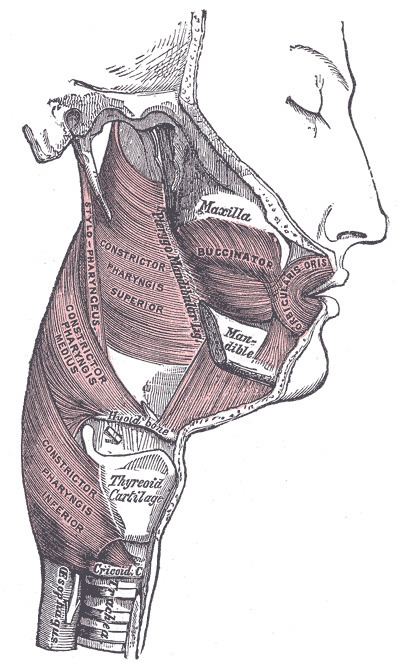TA A04.2.06.001 | FMA 46619 67169, 46619 | |
 | ||
Nerve receives motor innervation by Vagus nerve (CN X) Latin musculi pharyngis, musculus constrictor pharyngis or tunica muscularis pharyngis | ||
The pharyngeal muscles are a group of muscles that form the pharynx, determining the shape of its lumen. The pharyngeal muscles contracts pushing the food into the esophagus. There are two muscular layers of the pharynx: the outer circular layer and the inner longitudinal layer. The outer circular layer includes:
During swallowing, these muscles constrict to propel bolus downwards (an involuntary process).
The inner longitudinal layer includes:
During swallowing, these muscles act to shorten and widen the pharynx.
They are innervated by the pharyngeal branch of the Vagus nerve (CN X) with the exception of the stylopharyngeus muscle which is innervated by the glossopharyngeal nerve (CN IX).
References
Pharyngeal muscles Wikipedia(Text) CC BY-SA
